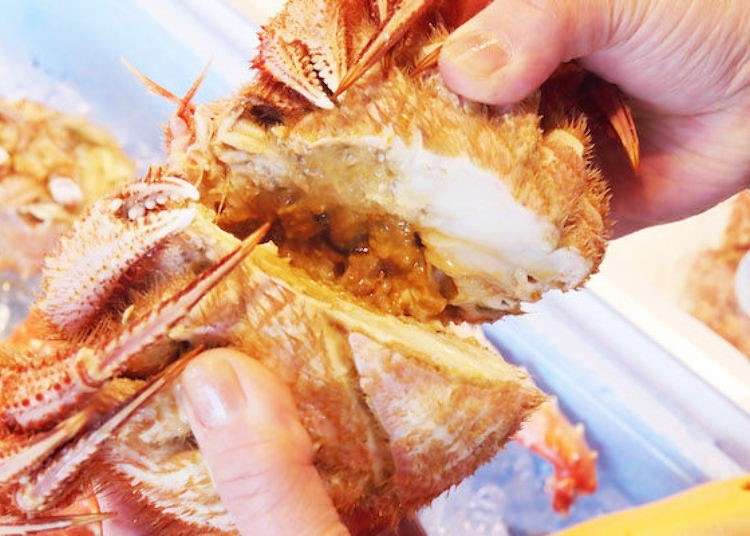
When you travel to Sapporo, you can't miss a visit to the Nijo Fish Market! Fresh kaisendon seafood bowls are one of the delicacies for which Sapporo is famous, and for a special early morning treat, a shop called Oiso has some of the best in town. Within walking distance of the city center, it offers about 30 types of seafood bowls!
Afterward, continue strolling through the Nijo Market to see and sample the many other types of delicious foods available there.
Oiso in Nijo Fish Market: The 3-ingredient seafood bowl consisting of sea urchin, salmon roe, and king crab!
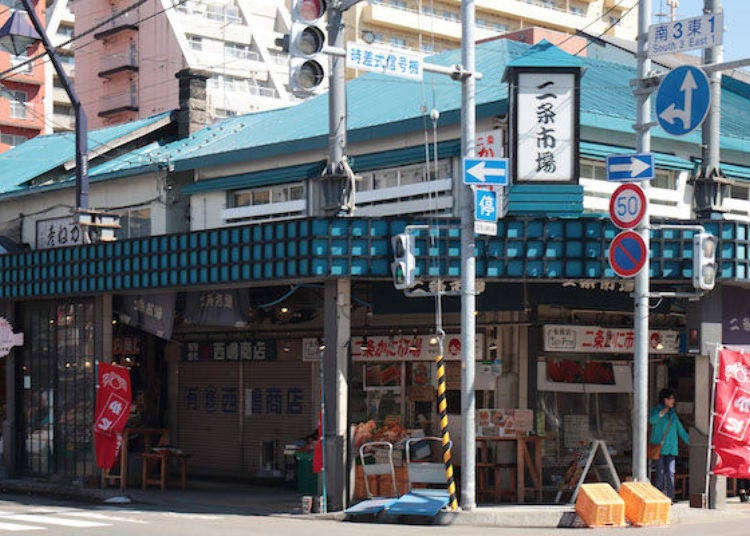
Five minutes on foot from the No. 34 exit of Odori Station serviced by the Namboku, Tosai, and Toho subway lines. Oiso at Nijo Market is a fresh seafood restaurant also easily accessible from the Sapporo TV Tower in central Sapporo and the Tanuki Koji shopping district - both other famous sightseeing venues.
It is open from 7 in the morning, which makes it convenient for early morning diners.
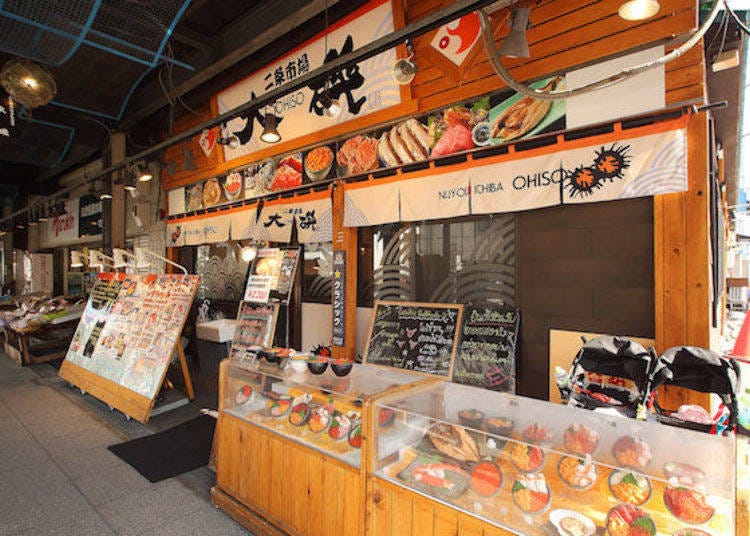
I visited around three in the afternoon, hoping to find the place less crowded, but all the tables were full, and I ended up sitting at a horikotatsu - a table on a tatami mat with a recessed area under it for your legs.
The menu showed more than 30 types of bowl dishes that included hanasaki (blue king) crab and tuna!
Everything looked so delicious I had a hard time deciding what to choose, but I ended up selecting the highly popular sanshoku-don (literally “3-color bowl”) that consists of three different ingredients. There also was a choice between ordering regular white rice or vinegared rice, such as that used in sushi.

The tray with the sanshoku-don bowl of sea urchin, salmon roe, and king crab.

Actually, this shop is well-known for its sea urchin. It acquires them all year round; in spring from the Hidaka region, in winter from eastern Hokkaido.
The sea urchin from Rishiri and Shakotan are especially popular, and those taken from the Sea of Japan between June and August are particularly delicious.
Regular customers come every summer not only from Sapporo but all parts of the country to enjoy these specialties.
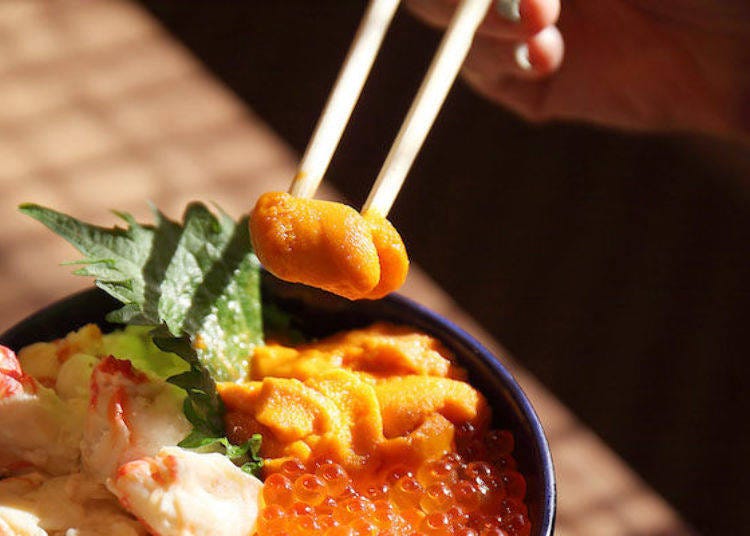
Most of the sea urchins are of the bafun uni variety. No preservatives are used, but instead, they are washed with seawater to enhance their natural flavor, which leads to them affectionately being called “saltwater sea urchins.”
The meat is orange in color and has a soft, rich texture. After just one bite, you’ll be glad that you tried it!
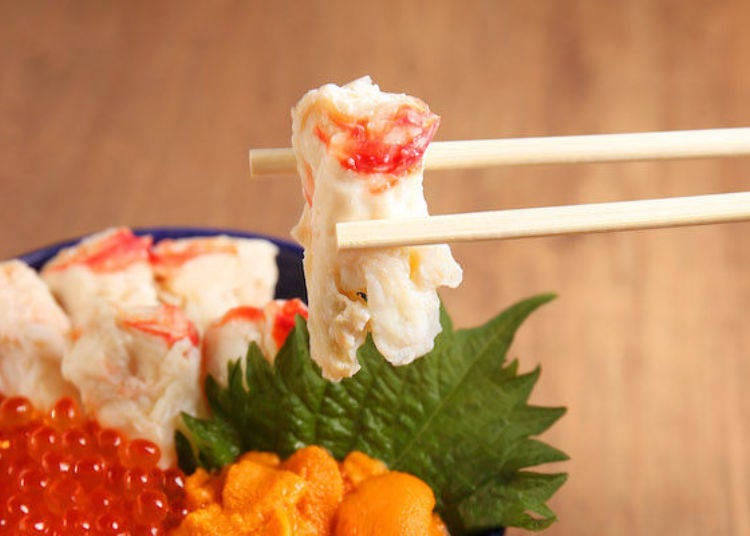
The part called dakimi (breast meat) is the part that connects the legs to the body of the king crab and, when boiled in salt water, is very delicious. This part moves a lot, so the meat is dense and has a soft, springy texture. The salmon roe is pickled in soy sauce that gives it a deliciously smooth texture.
First, savor the flavor of the sea urchin and king crab as they are for their natural salty taste, and after that, dip them in wasabi-flavored soy sauce - the typical way of eating it.
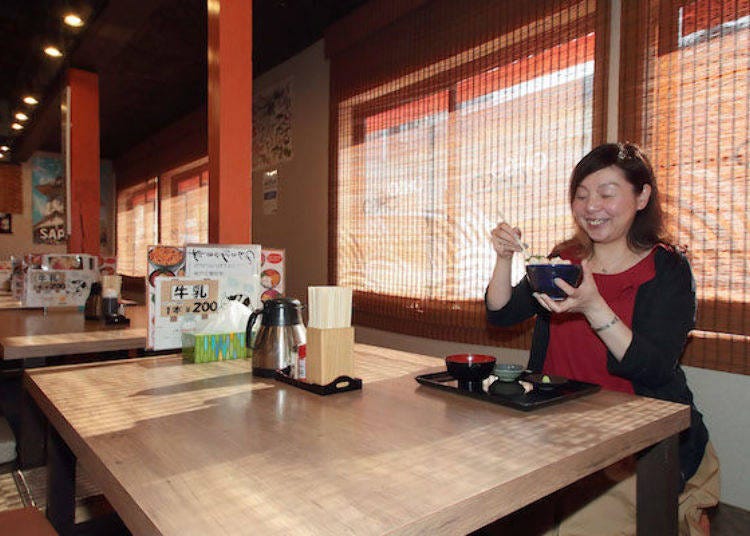
If you want to try something else, I recommend the fresh scallop that comes in its shell and fresh Sakhalin surf clam sashimi or grilled fish like Okhotsk Atka mackerel.
-
Nijoichiba Oiso二条市場 大磯
- Address 〒060-0053 北海道札幌市中央区南3条東2 二条市場2丁目入口/Nizyousizyou2tyoumeiriguchi, 2, Minami3-johigashi, Chuo-ku Sapporo-shi, Hokkaido, 060-0053, Japan
- Phone Number 011-219-5252
Hours: 7:00 a.m. ~ 7:00 p.m.
Closed: Wednesdays and New Year’s holidays
Nijo Fish Market: Selection of other delicious corner shops!
After a filling meal at Oiso, take a stroll through Nijo Fish Market. It extends along South Nijo Avenue from the Zentsu Kondo Shoji shop to the Butcha Tomare shop, a row of 22 shops in an L configuration.
It connects with two other shops, the Sakanaya no Daidokoro Nijo Market Store and the Sakanaya no Daidokoro Noren Yokocho Store, making 24 shops in total selling fish, vegetables, and other delicacies.
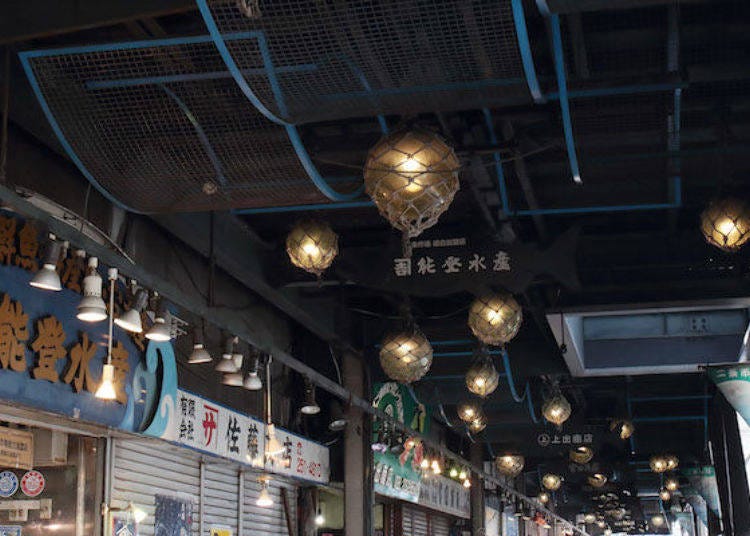
Incidentally, there are quite a few places to eat and drink along the narrow road along Noren Yokocho and Butcha Tomare. Most of these shops are only open at night.

Nijo Fish Market got its start during the early Meiji period. Fishers began selling their catches taken around Ishikarihama here. Eventually, stores sprang up until they numbered 13, and this gave rise to the first name of Nijo Market, which was Association of 13.
In recent years it has become familiar to Sapporo residents as a “people’s kitchen” offering high-quality products where the nearby bar and restaurant owners come to do their shopping.
Let’s begin by taking a look at Zentsu Kondo Shoten. Crab and salmon roe are lined up at the front of the shop, and in the rear, there is the Keiran diner. If you ask, you can have the crab you purchased prepared and eat it there. This is a great experience you definitely should try!
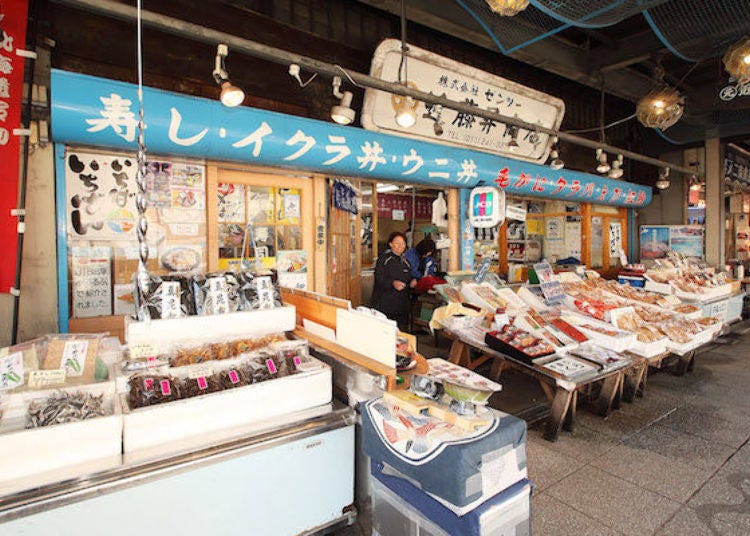
Hasegawa Shoten with its rows of scallops.
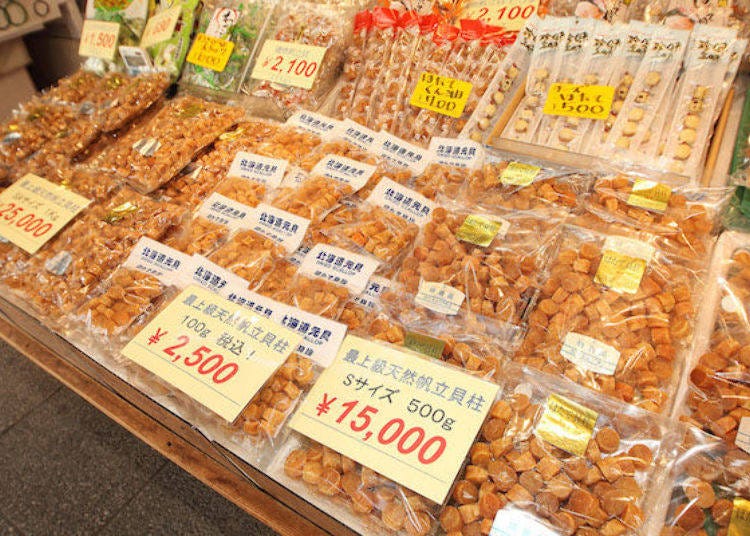
Ikeda Shoten, located next door, has a wide selection of large cuts of tuna as well as various shellfish like scallops, whelk, and surf clams!
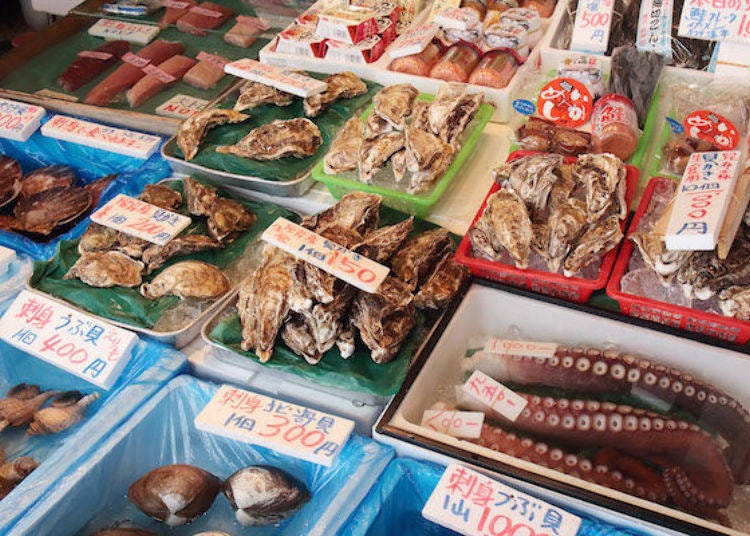
The oysters are also delicious. Those offered this day were taken from Akkeshi, located in the eastern part of Hokkaido. They are delicious whether served raw, steamed, or grilled, which makes them perfect for barbecues, according to one of the clerks.
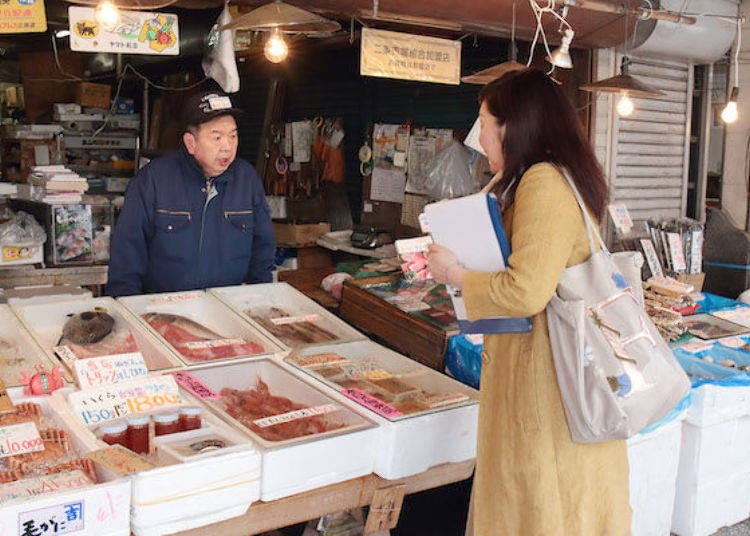
Honma Sengyo-ten (Honma Fresh Fish Store) is noted for its crab.
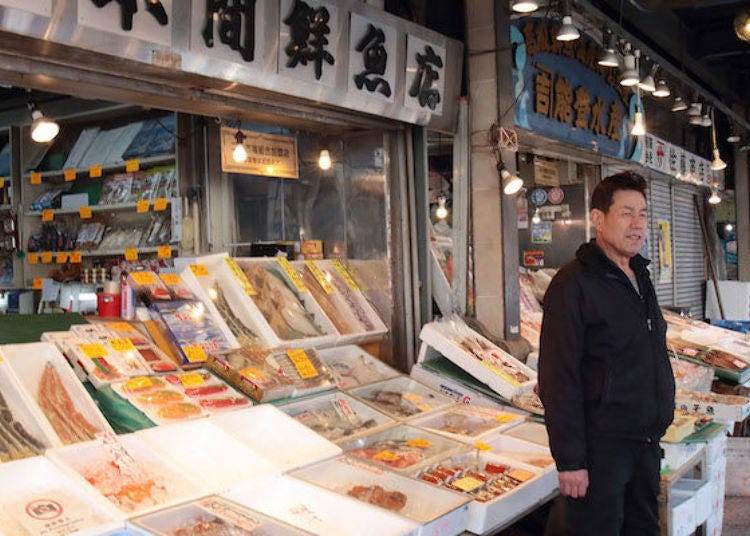
A horsehair crab leg taken from Monbetsu in the eastern part of Hokkaido that had just arrived on the day we did this report and offered to us to sample taste.
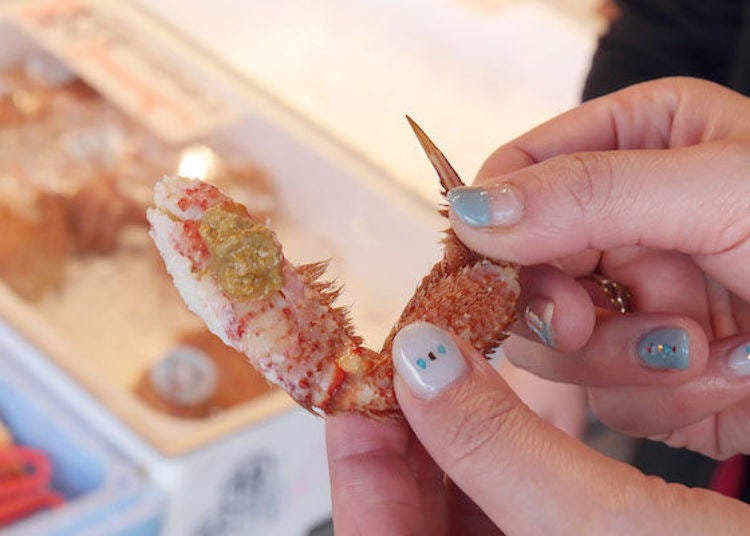
The flavor explodes the moment you bite into it!
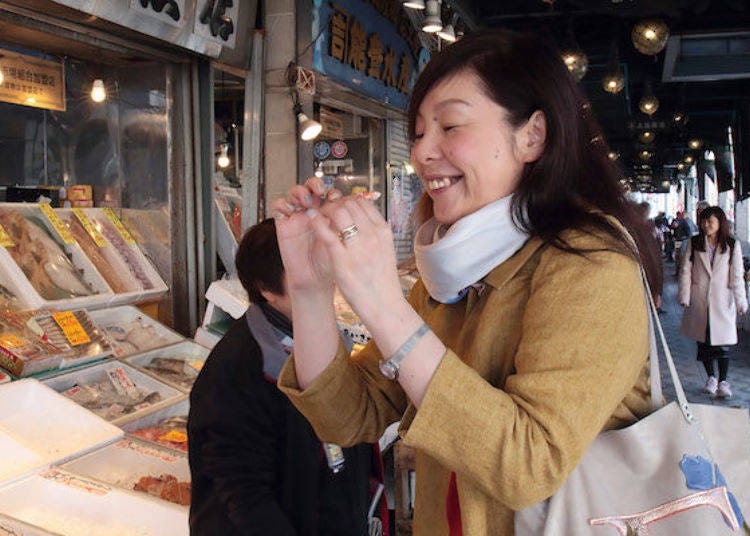
One of the staff members told us, “We do our best not to handle frozen products, and because we stick to that policy, we can confidently make recommendations to customers!”
We were really amazed that we were given one whole crab leg to sample taste as that seemed rather extravagant for a taste sample! But we were told that “when customers actually see how delicious it is, they buy it!”
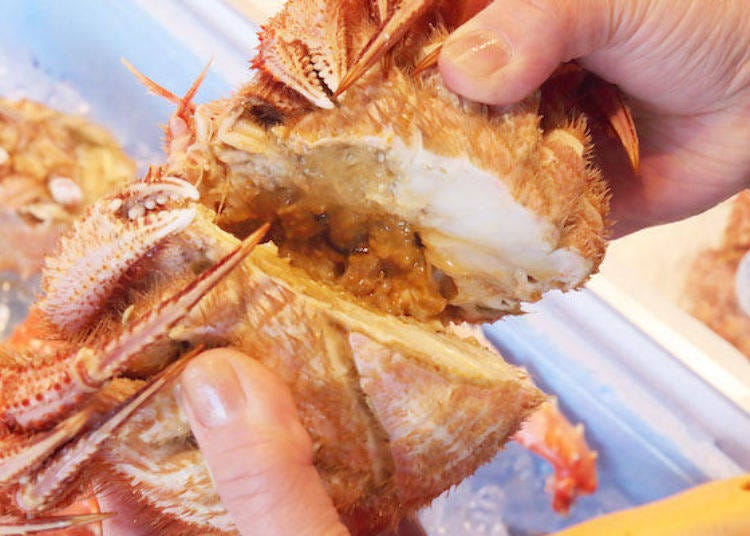
Prices depend on the going rate. For example, at the time of this report, horsehair crab was going for about 3,000 yen, but because the price for acquiring them depends on the quality of the crab and whether it is about to or has just shed its shell, it isn't easy to always offer them at the same price.
One more little-known popular product is the large butterfly-fileted Atka mackerel which is lovingly prepared one at a time and dried by the shop.
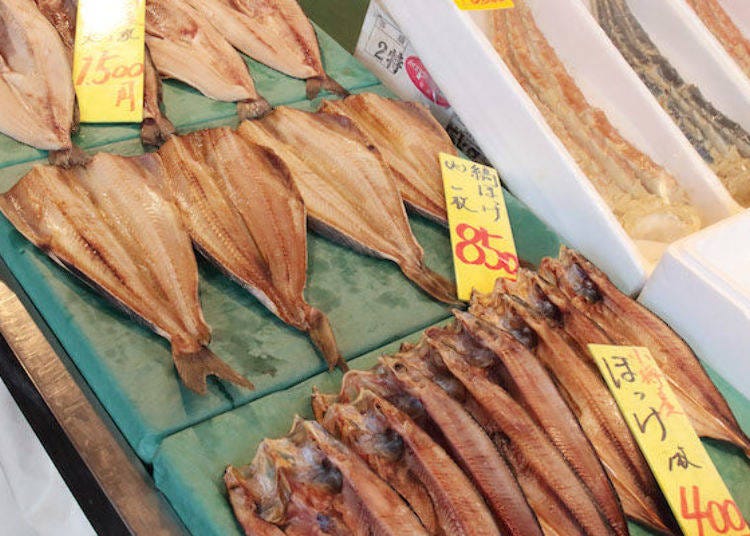
They were kind enough to let us photograph them filleting the mackerel in the rear of the shop.
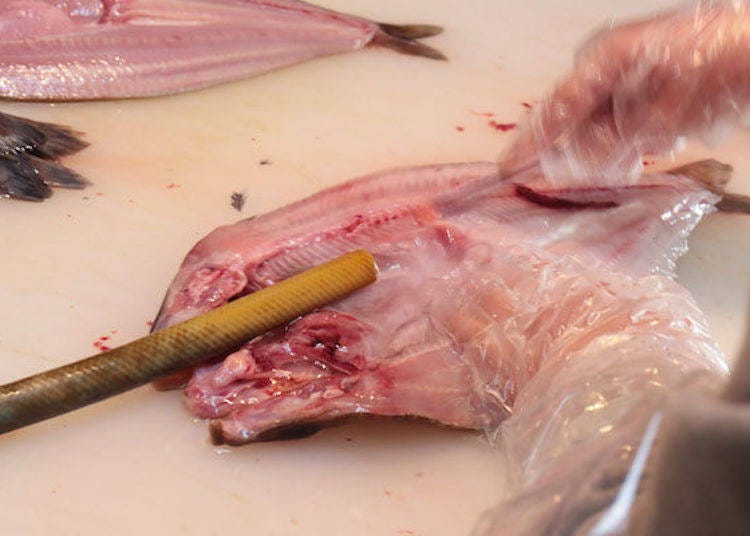
We also found Hokkaido-grown asparagus and Yubari melons!
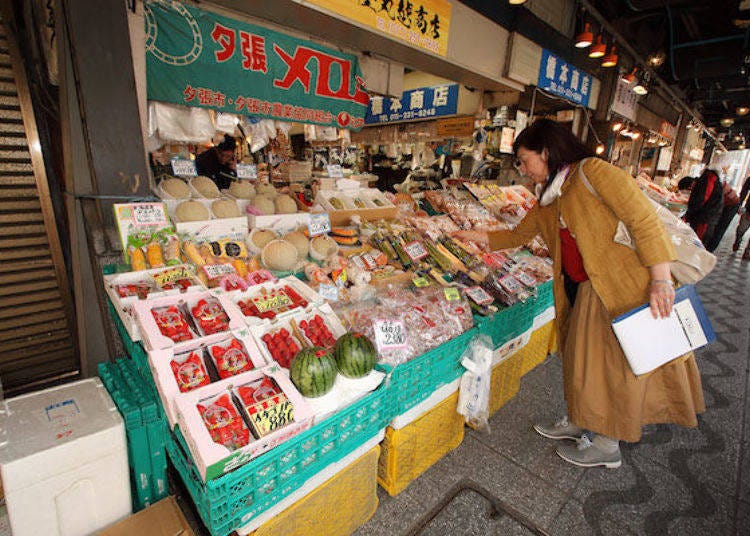
According to one of the clerks, “although the season is only from spring to early summer, we can get them up until October.” He told us that while quickly packing potatoes into cardboard boxes being readied for shipment.
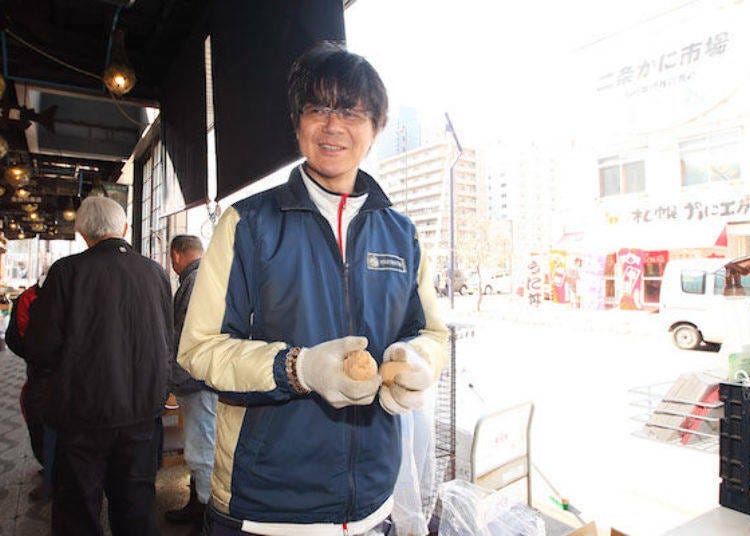
Yubari melons, which they normally get between May and December each year, are also sold in easy-to-eat slices.
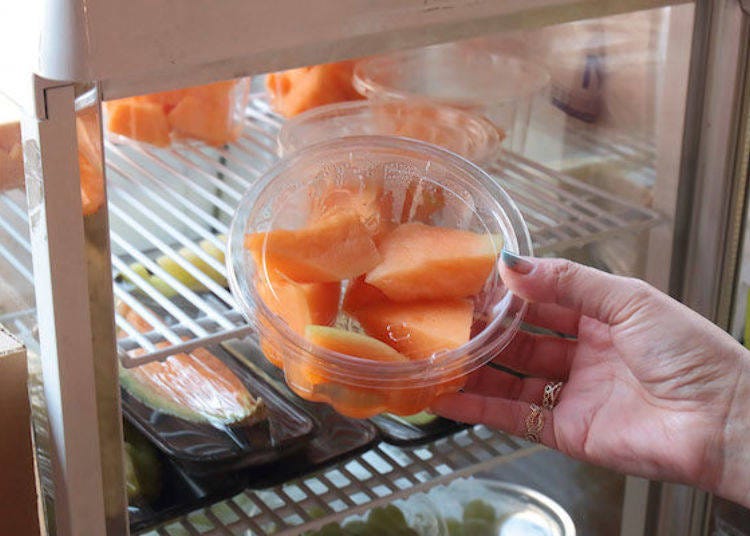
The Nijo Crab Market sells king crab this large! We were advised that, “if you want to get ones with a lot of meat, you best come in the morning or a little before noon.”
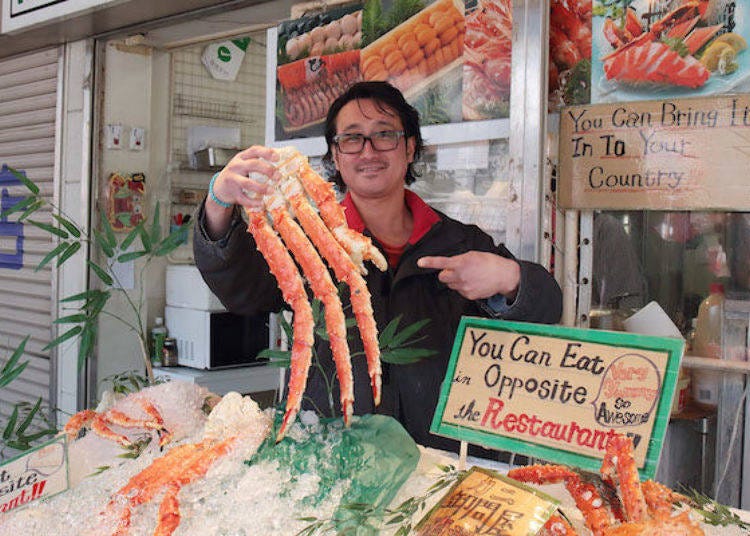
The fresh seafood bowl shop Oguma Shoten that just opened in February 2018, a branch of the main shop located in Naganuma Town, Yubari County, sells the very popular Aisu no Ie soft ice cream cone. This makes a great dessert after a meal and you can savor it while ending up your stroll at the nearby Butcha Tomare.
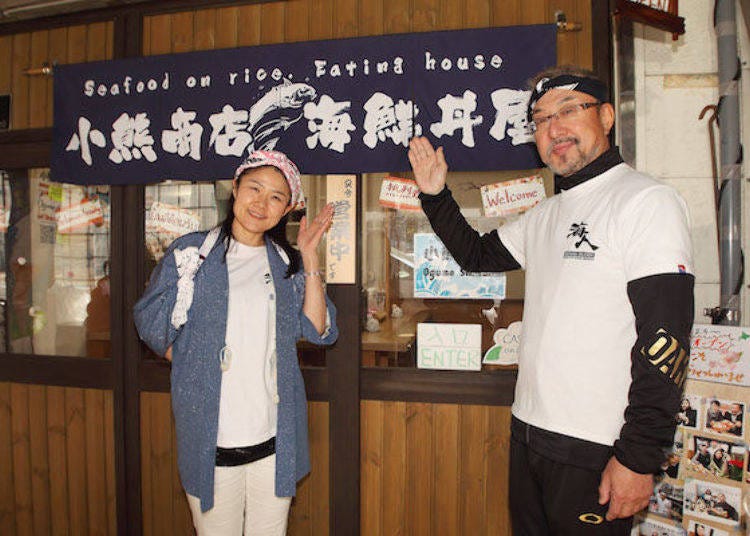
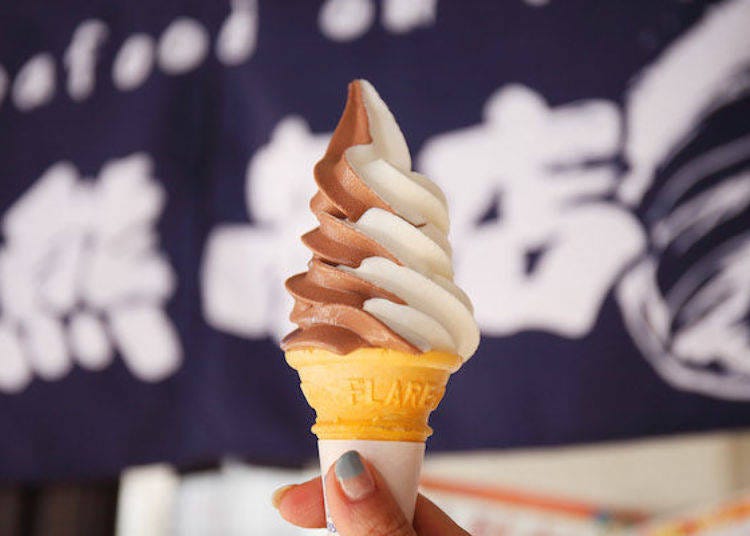

We had a most enjoyable time talking with all the friendly staff of these seafood and vegetable shops who told us about the many Hokkaido delicacies.

During our visit, we learned that many shops will filet and prepare crab and shellfish they sell and pack them in ice for you so that visitors can also have their purchases shipped or take them with them back to their hotel to enjoy. It makes traveling that much more enjoyable.
For a delicious visit to Sapporo, by all means, visit the Nijo Fish Market!
* All prices quoted in the article include tax
Written by: Fumi
- Area
- Category
*Prices and options mentioned are subject to change.
*Unless stated otherwise, all prices include tax.
Popular Tours & Activitiess
Recommended places for you
-

MARUUMIYA Sapporoekikitaguchiten
Sashimi
Sapporo / Chitose
-

Koropokkuru
Sashimi
Sapporo / Chitose
-

KAISENKOSHITSUSAKABAIMARISAPPOROEKIMINAMIGUCHI
Sashimi
Sapporo / Chitose
-

IMARIOdoriekimae
Sashimi
Sapporo / Chitose
-

HANASAKI
Sashimi
Sapporo / Chitose
-

KaiyouteiSusukino Main store
Sashimi
Sapporo / Chitose
-
Ad

Smart Ways to Avoid Crowds and Enjoy a Safe, Comfortable Trip to Noboribetsu Onsen
-

Beyond Hakodate and Matsumae: Enjoy the Hidden Gems of Hokkaido’s Donan Area
-

BIGGEST SALE ALERT! SATUDORA Tax-Free Winter Sale: Stack Coupons for Massive Savings!
by: Guest Contributor
-

Great Local Eats: 5 Expert-Recommended Local Chain Restaurants in Hakodate
by: Nobuka Kawashima
-
Ad

Sapporo SATUDORA Shopping Guide: Get Souvenirs, Medicine & More at This Iconic Drugstore (Special Deal Inside!)
-
Ad

Smart Ways to Avoid Crowds and Enjoy a Safe, Comfortable Trip to Otaru.
-

Tokyo Train Map: Your Essential Guide to Subways and Railways
-

3 All-You-Can-Eat Seafood Restaurants in Sapporo: In Japan, You Don't Fill up on Bread, You Fill up on Sushi!
-

Fresh Winter Delicacies! 9 Seasonal Hokkaido Foods
-

Must-Try Hakodate Restaurants! 3 Best Shops Serving Hokkaido Squid Dishes
-

6 Most Scenic Spots Around Mount Yotei, Hokkaido: Gorgeous Sunflowers & More!
-

Kichijoji – Explore Tokyo’s Top-Rated Stylish Suburb in Half a Day!
- #best sushi hokkaido
- #things to do hokkaido
- #best ramen sapporo
- #what to bring to japan
- #new years in tokyo
- #what to buy in ameyoko
- #japanese nail trends
- #what to do in odaiba
- #onsen tattoo friendly tokyo
- #daiso
- #best sweets otaru
- #japanese fashion culture
- #best nature furano
- #japanese convenience store snacks
- #best japanese soft drinks

















